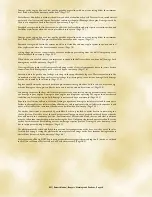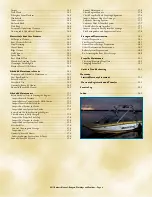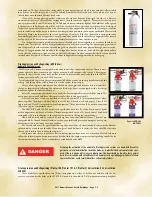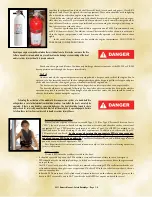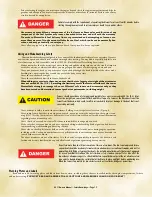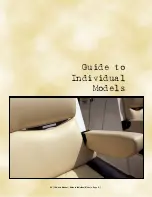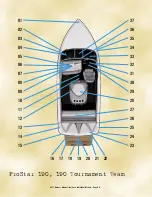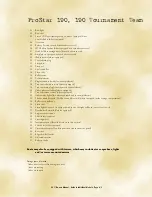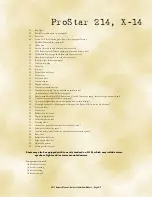
is lost, destroyed or the owner’s address changed. If the certificate of
number becomes invalid for any reason, it must be surrendered in
the manner prescribed to the issuing authority within 15 days.
Operator’s License
Some states are implementing operator’s license require-
ments. These requirements vary widely. Whether operating a boat
locally or in a remote location, operators should verify with state
and local authorities regarding whether a license or training is re-
quired. This should be checked at least annually.
Recommended Equipment
The responsible boat owner will avoid potential problems
on an outing by having additional equipment on board. Normally,
the decision regarding the appropriate equipment to take on indi-
vidual outings is dependent upon the body of water and the length
of the trip. We suggest the following equipment as a minimum
(your MasterCraft dealer can also assist you with additional rec-
ommendations):
• An anchor with at least 75 feet of line (in saltwater operation, particularly);
• A manual bailing device for removing water;
• A combination oar/boat hook;
• A day-and-night visual distress signal;
• A first aid kit and manual;
• An airway breathing tube;
• A waterproof flashlight;
• A non-electric horn or whistle;
• A set of local navigational charts;
• Mooring lines and fenders;
• Extra engine oil;
• A tool kit; and
• A portable, battery-operated AM/FM radio or weather radio/scanner.
Safety Afloat
The cause of many boating accidents is often the operator’s failure to follow basic safety rules or written
precautions. Many accidents can be avoided if the operator is completely familiar with the boat, its operation
and can recognize potentially hazardous situations before an accident occurs.
Failure to comply with safety-related information and instructions may result in serious injury or
death to you and/or others. Always use common sense when operating the boat or participating in
any activities associated with the boat, including, but not limited to, periods of time when the boat
engine is shut down and the boat is not in operation.
• Improper operation of the boat is extremely dangerous! Operators must read and understand all operating
manuals supplied with the boat, before operation.
• On-board equipment must always conform to the governing federal, state and local regulations.
• Always attach the engine emergency safety shut-off lanyard to a part of your clothing (such as a belt loop)
when operating the boat.
Never override or modify the engine emergency safety shut-off switch in any way.
2011 Owners Manual...Safety Knowledge...Page 1-6
• Never operate the boat while under the influence of alcohol or drugs.
• All persons must be seated in a designated occupant seating area while the boat is in motion. Never stand
or allow passengers to stand in the boat or sit on the motor box or tower (where equipped), or
any location
other than occupant seating
while underway. You or others may be thrown within or from the boat, which
could result in serious injury or death. Never allow occupants to use sun pads or transom seating while the
engine is running.
Summary of Contents for prostar 190 2011
Page 26: ...Guide to Individual Models 2011 Owners Manual Guide to Individual Models Page 4 1...
Page 81: ......
Page 93: ......
Page 105: ......






